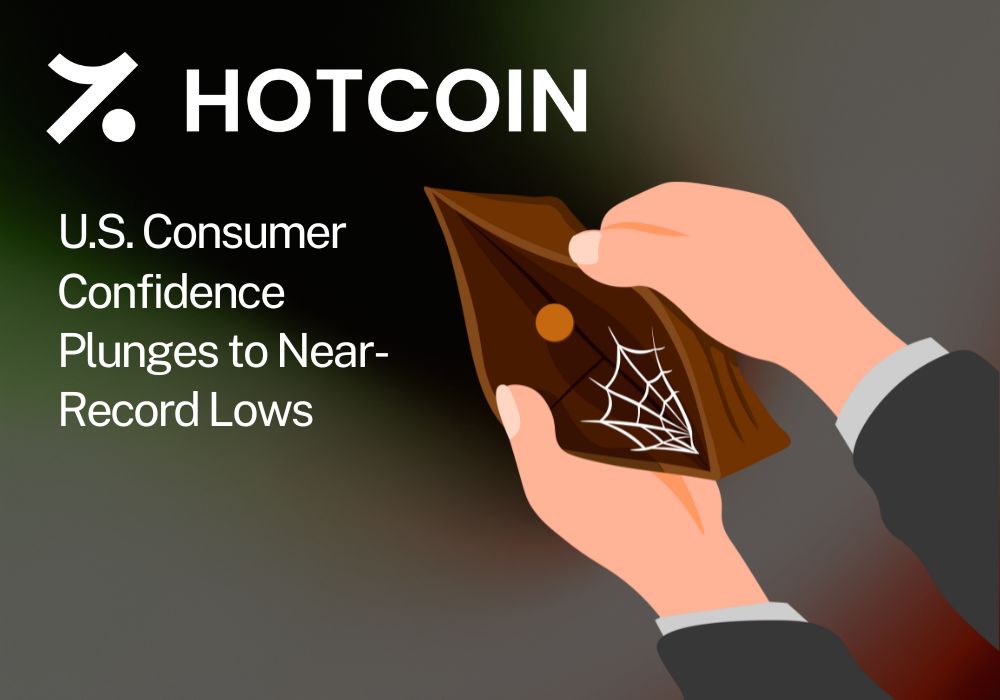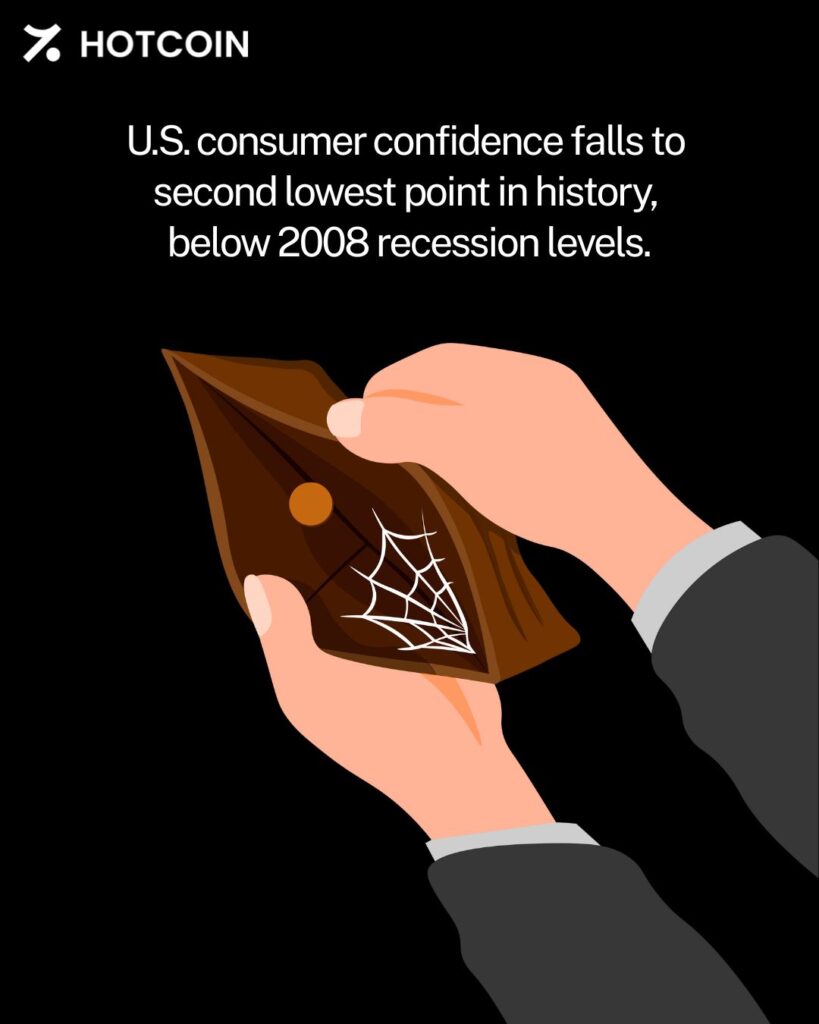
Recent data from the University of Michigan’s monthly “Surveys of Consumers” shows that U.S. consumer sentiment has fallen to a reading of 50.3 in November 2025 — the second-lowest level ever recorded. This dramatic slump reflects growing concerns about personal finances, employment prospects and inflation, with the “Current Economic Conditions” sub-index falling to an all-time low of around 52.3. Analysts point to high inflation expectations, economic uncertainty and a protracted government shutdown as major contributors to the drop in consumer sentiment.
Why This Matters for Crypto
1. Risk Appetite Takes a Hit
When consumers are pessimistic about their finances and the economy, risk-assets tend to suffer. That includes the crypto market. A growing body of research shows a significant negative relationship between U.S. consumer confidence and the excess returns of cryptocurrencies. In short: when sentiment falls, investors become more cautious, speculative assets like crypto may lose favor, and capital shifts toward safer havens (cash, bonds, gold).
2. Market Liquidity & Investment Flow May Pause
Lower consumer confidence often correlates with lower discretionary spending and investment. For crypto markets, this can mean reduced new inflows, lower trading volumes, and greater volatility as fewer participants are willing to hold high-risk positions.
3. Macroeconomic Backdrop Shapes Crypto Narrative
Poor consumer sentiment raises questions about economic growth, inflation and central bank policy. If confidence is weak, markets may expect a slowdown or potential recessio, that in turn can lead to policy tailwinds (rate cuts) or headwinds (reduced risk-taking). Crypto markets often move on such macro signals. Moreover, when traditional asset classes are under pressure, some investors may rotate into crypto seeking diversification, but that tends to happen only when sentiment stabilizes, not when it’s cratering.

What Crypto Traders Should Watch
- Trading volumes: Watch for dips in exchange volumes as sentiment weakens — could signal liquidity drying up.
- Risk on/off flows: We may see sharper corrections in major crypto assets (e.g., Bitcoin, Ethereum) if risk appetite shrinks.
- Macro catalysts: Keep tabs on inflation data, employment numbers, central-bank commentary — all influence confidence.
- Sentiment linked indicators: Since studies show consumer sentiment and crypto returns are negatively correlated, tracking consumer confidence reports can hint at potential market pressure ahead.
Hotcoin’s Take
With U.S. consumer confidence plunging to near-historic lows, the crypto market is entering a more cautious phase. For traders and investors using the Hotcoin platform, the message is clear:
- Don’t rely on broad risk-on momentum.
- Focus on high-quality projects with resilient fundamentals.
- Consider managing exposure and maintaining flexibility until sentiment shows signs of bottoming.
- Use this period as a strategic opportunity — if a meaningful macro uplift occurs (improved consumer sentiment, policy support, or risk-on resurgence), crypto could benefit strongly from the rebound.
Your Trades. Our Priority. Hotcoin.
Hotcoin Official Site: https://www.hotcoin.com
Hotcoin Twitter: https://x.com/HotcoinGlobal
Hotcoin Telegram: https://t.me/HotcoinEX
Hotcoin Chinese Twitter: https://x.com/hotcoinzh
Hotcoin Chinese Community: https://t.me/hotcoinglobalcn
